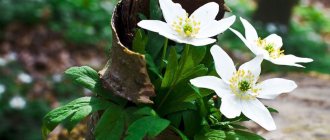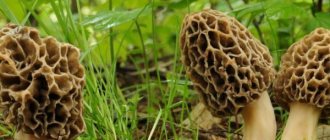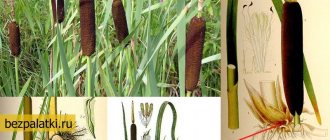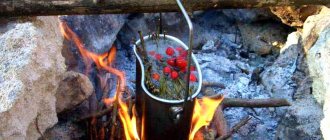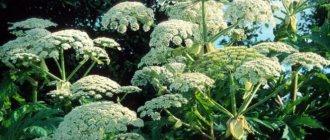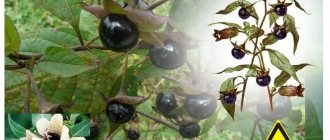Wild poisonous plants may look harmless enough, but once ingested by a person or animal, they can cause poisoning or even death.
Toxic substances protect the plant from animals that might eat it; the poison can be contained in the stems, leaves, roots or even seeds. As the plant grows, the amount of toxic substances in it constantly changes. Even the same species under different living conditions can be toxic or non-toxic.
Humans and different animal species are susceptible to different poisons in different ways. Thus, atropine contained in belladonna, for example, strongly affects people; it is dangerous for cats, dogs and birds, but has little effect on horses, pigs and goats, and is almost harmless for rabbits.
Belladonna
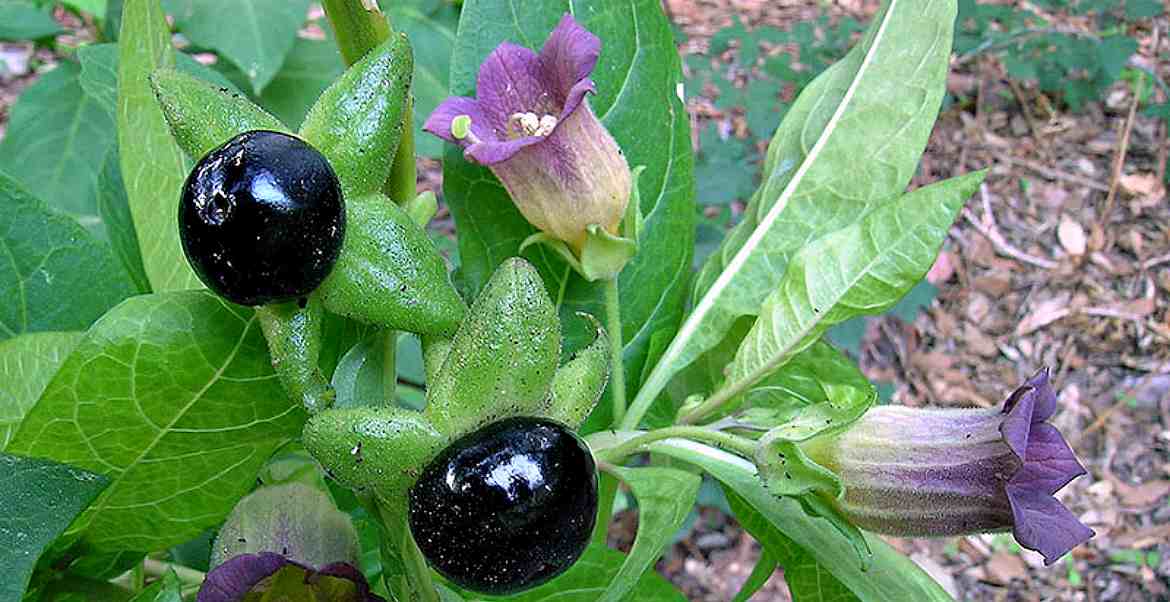
This name is translated from Italian as “beautiful lady,” which is not surprising. In former times, girls used the juice of the plant to enhance the beauty of their eyes. They buried it so that the pupils dilated and acquired an attractive shine. The berries also found their use in the beauty industry: they were rubbed on the cheeks to achieve a bright blush. Symptoms of poisoning by the poison of this plant have been known in Rus' for a long time: after consuming belladonna leaves, excitement of the nervous system develops, up to signs of rabies, the heartbeat increases significantly, vomiting, difficulty swallowing, and problems with the respiratory system appear. You can even get poisoned from honey if the bees are diligently collecting pollen from a flowering plant. Touching belladonna is also dangerous, so avoid this insidious plant. You can recognize it by the shiny black berries in the middle of a small bush. The plant itself reaches 90 cm in height, and the flowers resemble small bells from blue to purple.
Hemlock
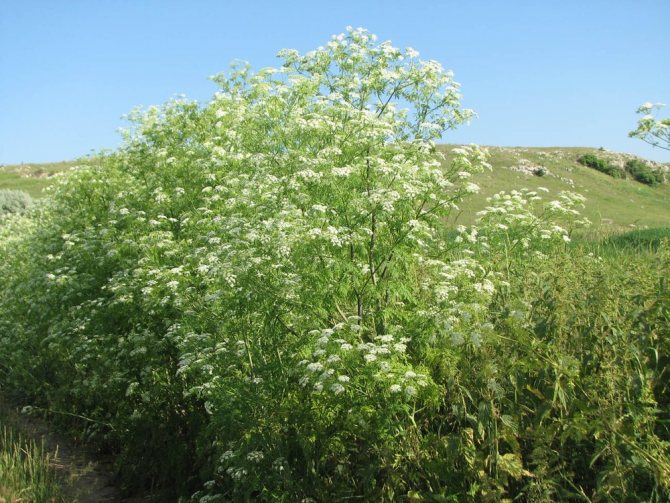
Even in ancient Greece, hemlock was widely known as a poison. The plant is completely poisonous, so if you accidentally touch it, be sure to wash your hands. Hemlock is considered a weed and grows almost throughout Russia. You can meet him both at the dacha and at the edge of the forest. Hemlock is an umbrella plant reaching 180 centimeters in height. The stem of the plant most often has a bluish bloom, and the leaves are carved, reminiscent of parsley. The flowers are small, white, arranged like an umbrella. Despite the fact that hemlock is a medicinal plant, only professionals should work with it, otherwise you can easily get poisoned.
Representatives of the plant world suitable for food
Nettle
Perhaps the most widely available plant with edible shoots and leaves is nettle. Its leaves are extremely rich in vitamins C, B and K and carotene. Young nettle can be consumed raw, but before doing so, you need to thoroughly mash the leaves to remove the stinging hairs.
Interesting: What is ecology - meaning, definition and types
Dandelion as food
Dandelion
Equally common is the dandelion. Perhaps every person knows what this plant looks like. Dandelion contains large amounts of calcium, phosphorus, protein and iron. The leaves of this plant can also be eaten raw, but you must first soak them in water to remove the bitter juice. But the most nutritious part of the plant is the root - it can be fried, boiled or dried for subsequent grinding into flour.
Kislitsa

Many seemingly unsightly herbs are not only edible, but also widely used in medicine. Among them is wood sorrel, a plant with small leaves that prefers damp and shaded places. Oxalis is rich in vitamin C and oxalic acid and is usually eaten raw. Dried sorrel is used as a seasoning.
Rhubarb
In almost every forest there is rhubarb, a broad-leaved plant that grows in the form of huge rosettes. Rhubarb stems are eaten raw, dried or boiled. Be sure to remove the skin before use.
Veh poisonous
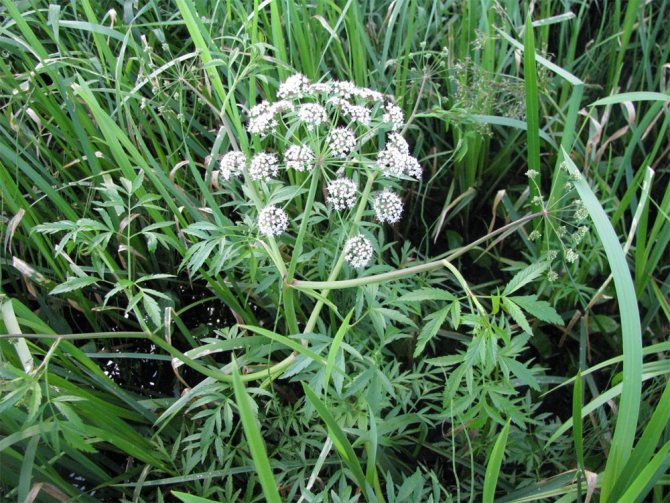
This plant grows mainly near bodies of water and is somewhat reminiscent of hemlock. This is an umbrella plant with white inflorescences, growing up to 120 centimeters. Its leaves also resemble parsley. Particularly dangerous are its roots, which smell like carrots or celery, but are extremely poisonous. In small doses, the poison cicutoxin contained in the plant has a calming effect, but in case of overdose it causes headaches, nausea, convulsions and other unpleasant symptoms of poisoning. For those who have been poisoned by a milestone, it is important to perform a gastric lavage as quickly as possible and consult a doctor, otherwise the consequences can be dire. Poisoning can also occur in livestock that grazes on water meadows where the insidious plant grows.
Types, photos and descriptions of poisonous plants
Let's look at the most dangerous and common of them:
Hogweed Sosnovsky
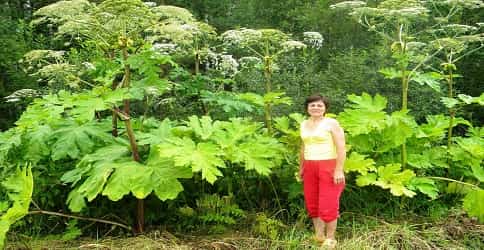
By order of Stalin, Sosnovsky hogweed was brought to Russian territory. It was planned to grow it as a silage crop, but all experiments failed. It turned out that feeding cattle with hogweed gives an unpleasant specific taste to milk and meat, and also negatively affects the offspring.
The large leaves of hogweed can cause serious damage when in contact with human skin, causing chemical burns. The selection of hogweed immediately stopped, but later it turned out that the plant is distinguished not only by its large size (up to 5 m) and endurance, but also by its enormous reproduction rate.
If hogweed appears on the site, then very soon it will displace all natural vegetation and displace any other crops. It caused an agricultural crisis in the 90s, and since then many methods have been undertaken to combat this pest.
This harmful weed can not only destroy all useful vegetation in the nearby area, but also cause serious harm to health, including death.
Having encountered such a fantastic plant, you have a desire to touch the thick stem, tear off an inflorescence or photograph it, but you should not do this.
Hogweed fruits are surprisingly small and resemble dill seeds. You can find out where the thickets of this weed are not only in the warm season. Even in winter, when everything is covered with snow, huge dried stems with umbrellas rise above the ground so that you can remember this place and not come there for a picnic in the summer.
The poison of this plant causes serious gastrointestinal disorders and slows the heart rate, which can lead to death.
Datura common
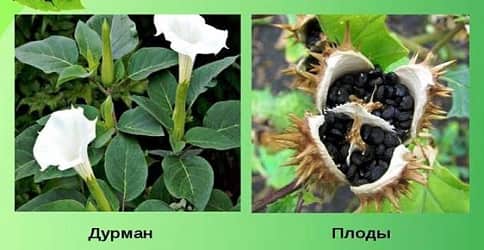
Datura common is a fairly well-known poisonous plant of the nightshade family. Stems 50-80 cm tall. The leaves are ovate-shaped, with notched-toothed edges. The white flowers are quite large, funnel-shaped. The fruits are a capsule with many thorns or thorns.
All parts of the plant contain alkaloids, atropine groups. The largest amount of alkaloids is found in leaves and fruits. All parts of the plant contain toxic substances.
This type of plant is found among weeds, near residential premises, in vegetable gardens in the southern and middle regions of the European part of the former CIS, in the Baltic countries, in the Crimea and the Caucasus, in the southern regions of Central Asia.
It is used as a medical raw material for the production of certain drugs (asthmatol and astatine). Some drugs are used as an antispasmodic for bronchial asthma, whooping cough and other diseases accompanied by spasms of the bronchial muscles.
3. Lily of the valley

Few spring flowers are as charming as the fragrant lily of the valley. These forest flowers are native to Eurasia but have become very popular landscape plants in North America and many other regions. However, behind their cute exterior and pleasant aroma lies a potential danger.
In a home landscape where there are no children or pets, lily of the valley is probably safe. However, the plant's toxicity is so dangerous that ingestion can result in a trip to the emergency room or, in rare cases, death. Children and pets are most often affected, but the toxins can knock down even a large person.
The plant contains more than 30 cardiac glycosides, many of which inhibit the pumping activity of the heart.
All parts of the plant are considered potentially toxic. The most common effects are abdominal pain, blurred vision, slow and irregular pulse, and in severe cases, seizures, vomiting and diarrhea, cardiac arrhythmia and even death. Lily of the valley toxicity is serious and difficult to treat. A quick trip to the hospital is required even in cases of suspected ingestion. Ingestion of lily of the valley can be fatal, especially for children. The plant is classified as a "1" on the poison scale, which means it is highly toxic and can cause death. It is also a "3" due to the often severe dermatitis. Convallatoxin and convallamarin are the two main toxic glycosides in lily of the valley, but there are many others, as well as saponins, that have not been well studied and whose mode of action is not fully understood. The overwhelming effect is one of heart attacks. Just two leaves of the plant can be lethal to small children and pets. If this plant is present in your landscape, it is wise to remove it. This can help prevent any lily of the valley poisoning accidents and keep the garden safe for everyone.
White acacia

This plant is an ornamental tree with compound leaves and spines similar to a rose thorn. Acacia contains toxins that cause protein synthesis and irritation of the gastrointestinal tract. Treatment is supportive and adjunctive as there is no antidote. Death from ingesting acacia is possible in the most extreme cases, so the prognosis for recovery is good if prompt help is provided. This tree is found in many regions.
The toxin can be found in the bark, seeds and flowers of the plant. The main effects of the toxin are protein synthesis and gastrointestinal irritation. Symptoms of acacia poisoning may include: diarrhea, weakness, depression, loss of appetite, nausea, irregular pulse, difficulty breathing.
Hemlock
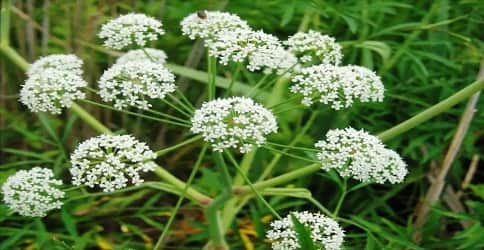
Poison hemlock is a rough, upright perennial plant. The smooth, branching stems are hollow and have purple spots, especially at the base. The leaves look like ferns. The inflorescence is a complex umbrella with several small white flowers. The plant, including the root, has a strong pungent odor, making it generally unacceptable.
Spread from Europe, poison hemlock is now found throughout North America, growing along roadsides, ditches, cultivated fields and desert areas, especially where the ground is wet. It is a prolific seed producer and, if left, forms dense stands.
Hemlock toxins - Conium alkaloids - have a profound effect on blocking spinal cord reflexes and have an initial stimulant effect followed by a depressant effect on the nervous system. Large doses of the alkaloid cause stimulation of skeletal muscles with subsequent neuromuscular blockade and paralysis. The leaves and stems are the most toxic part of the plant before the fruit develops. The seeds are highly toxic and can become a source of livestock poisoning when they become part of the feed fed to livestock.
Signs of poisoning: excessive salivation, abdominal pain, muscle tremors and loss of coordination, fast or weak pulse, frequent urination, cyanosis of the mucous membranes, death from respiratory failure occurs after 2-3 hours.
All hemlock should be removed from pastures to which animals have access. Killing plants by mowing or using herbicides before planting greatly reduces the likelihood of hemlock becoming a problem for livestock. The plant is most toxic in the early growth phase and livestock should not have access to the plant in the spring when it is growing rapidly.
6. Castor bean

A plant of the Euphorbiaceae family, native to Africa. It has become widespread throughout the world and is grown as an ornamental annual. Grows to the size of a small tree in warmer climates. The leaves are large, usually red-violet in color. The fruit is a spiny capsule, initially blue-green, becoming brown-black.
Toxic substances are found in leaves and seeds. Ricin (found in highest concentration in the seeds) is a highly poisonous compound. Ricinoleic acid is the main component of castor oil. After ingestion of the seeds, signs of colic and diarrhea develop. Toxic effects appear within hours and can be fatal. The leaves of the castor bean plant are also poisonous, causing temporary muscle tremors, ataxia and increased salivation. There are known rare deaths in animals that eat the leaves.
Castor beans should be removed from the digestive tract by inducing vomiting or by administering activated charcoal through a gastric tube. High doses of vitamin C are reported to be beneficial.
Ash tree or burning bush
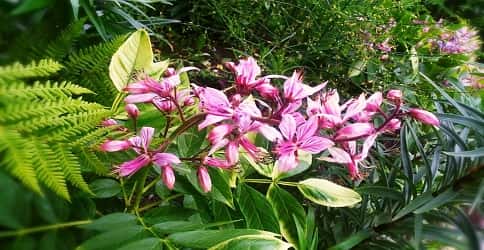
Ash tree is a fairly toxic plant. Flowering time: May-July. Height: 30-100 cm. Flowers can be pink, pale purple or white. The leaves of this plant are similar to ash, the flower is five-petaled. Habitat: Warm, open forest glades. Distribution: Europe, Asia.
Ash tree is a perennial plant that actively releases essential oils into the air, similar to lemon and vanilla aroma. All parts of the plant are poisonous and can irritate the skin.
8. Belladonna
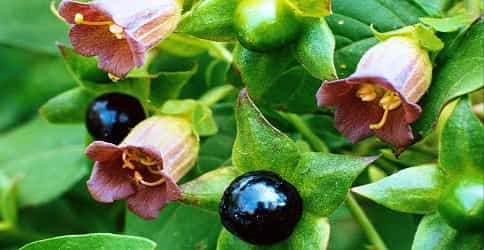
Belladonna is a Eurasian perennial plant with reddish, bell-shaped flowers bearing black, glossy berries. Other names for the plant include death nightshade, devil berries, death cherries, and devil grass. The plant gets its ominous nicknames because its foliage and berries are extremely toxic and contain powerful doses of tropane alkaloids. Its most common name, belladonna, comes from Italian, meaning “beautiful woman.” Historically, women used the herbal oil of belladonna to dilate and enlarge their pupils for a seductive effect.
Native to Europe, North Africa and Western Asia. It grows mainly in landfills, quarries, near old ruins, under shady trees or on wooded hills. Belladonna is a branching plant that resembles a bush. The fruits and berries appear green, but as toxins increase during the ripening stage, they turn shiny black.
Toxins cause delusions and hallucinations. Deadly nightshade berries pose the greatest danger to children as they are attractive to look at and deceptively sweet from the first bite. However, only two berries can kill a child, and it only takes 10 or 20 berries to kill an adult. Likewise, consumption of even one leaf can prove fatal to humans. Cattle, horses, rabbits, goats and sheep can eat the deadly nightshade without harm, although many pets are vulnerable to its lethal effects. Symptoms of fatal nightshade poisoning appear quickly. The ancient Romans, for example, used this plant for arrows with poisonous tips. Belladonna is rightly known as the plant that has been used most throughout history for stealth assassinations.
Belladonna is also cultivated for medicinal purposes in England, France and North America.
Crow's eye

Crow's eye is a herbaceous perennial plant distinguished primarily by its blue-black berries, similar to blueberries. In winter, the green part of the plant dies off, leaving behind a rhizome from which a new shoot grows the following year.
In ancient times, it was believed that crow's eye berries, sewn into clothing, could save a person from evil spells. During epidemics, they were worn on the body to protect against epidemics.
This plant has many popular names: bearberry, crowberry, crossgrass, crowberry, nail, wolf's eye, native grass, cuckoo's tears, etc.
What does a raven's eye look like? The stem is straight, the height of the stem ranges from 10 to 40 cm. In the lower part of the stem there are transverse leaves - wide, ovate, with a pointed tip. There are usually four of them, but sometimes there is a crow's eye with 5 or 6 leaves. In appearance, the flower resembles a small four-pointed star. Blooms in May and July, flowering lasts a long time. The fruit is a spherical berry with a diameter of about one centimeter, ripens in August. The berry is black and shiny, with a bluish coating, and there are many seeds inside.
Some people or children may confuse crow's eye fruit with blueberries. The taste of the berry is unpleasant, and even its smell can cause nausea or headaches in some people. For the same reason, animals do not eat them, so poisoning of livestock is extremely rare. An interesting feature is that birds eat berries in large quantities without harm to themselves.
The plant is distributed throughout almost the entire European part of the continent, in Western Siberia, the Caucasus, Crimea and the Mediterranean. Crow's eye grows in shaded, damp places - ravines, bushes, wet rocky slopes. It loves fertile soil, so it is found in deciduous and mixed forests, less often in coniferous forests or forest-steppe.
Swamp calla or calla calla

An unusually beautiful plant that can be found in damp, dark and marshy places. For example, near the shores of lakes, rivers and reservoirs.
All parts of the plant are poisonous, but especially the roots and fruits, bright red juicy poisonous berries collected in clusters. The toxins are weak, but if left untreated for a long time, they can even lead to death. The most important organs are affected, primarily the respiratory and then the digestive. Therefore, in case of poisoning, it is necessary to take urgent measures. First of all, consult a doctor. If for some reason this cannot be done quickly, it is necessary to remove toxic substances from the body by flushing the stomach with plenty of water. Antidotes are taken only as directed by a doctor.
Wolf's Bast
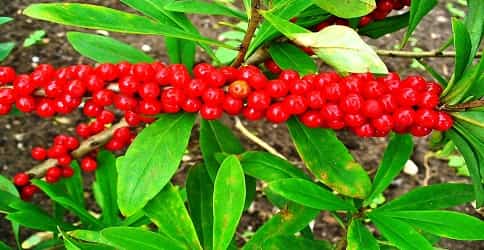
The height of the bush is from 30 to 120 cm. Wolfberry blooms in early spring, in April, before the leaves appear on the plant.
Its fragrant pink flowers are located on a branch, the stalks are very short. This shrub has beautiful fruits - oval, bright red berries. However, they are highly poisonous and cause death to those who ingest them. The plant contains the glycoside daphnin. Poisoning with this poison causes convulsions and bloody diarrhea.
Henbane

It’s not for nothing that henbane is called a plant that clouds the mind. It grows almost everywhere, so you need to be extremely careful not to touch henbane and avoid it. It has an unpleasant odor, grows up to 100 centimeters, and can be recognized by its pointed, sticky leaves. The flowers are small, brownish in color with a purple center, resembling wide bells. The seeds of the plant are in a box and look like poppy seeds. Poisoning occurs if part of the plant is eaten. The main symptoms are nervous system excitement, hallucinations, rapid heartbeat, dry mouth. In the Middle Ages, henbane was used as a poison.
Plants that help you survive
Plant foods contain almost all the substances necessary for a full life: vitamins, minerals, carbohydrates. Some plants have leaves and shoots for food, others have flowers and inflorescences, and still others have berries. And certain species have healthy and nutrient-rich roots.
The main advantage of herbs is the ability to eat them without pre-processing, as well as their availability and prevalence in almost all corners of the Earth (except perhaps for polar and desert regions). Knowledge of the properties of forest plants will help a lost traveler maintain his strength and successfully survive in the wild.
Daphne

The poisonous plant is insidious, and its berries can cause poisoning and even death. The poison of the plant causes redness on the skin, painful blisters, and has a negative effect on the kidneys and stomach. The plant is easy to recognize: the shrub blooms in spring with bright pink, cream or purple inflorescences, the pollen of which can cause headaches and nausea. Small bright red berries ripen in July. Wolfberry is dangerous due to its poisonous sap, so you should not approach the bush. Despite the fact that it is listed in the Red Book, you can stumble upon a poisonous plant throughout Russia, especially on the edges of forests.
The most dangerous mushroom is toadstool
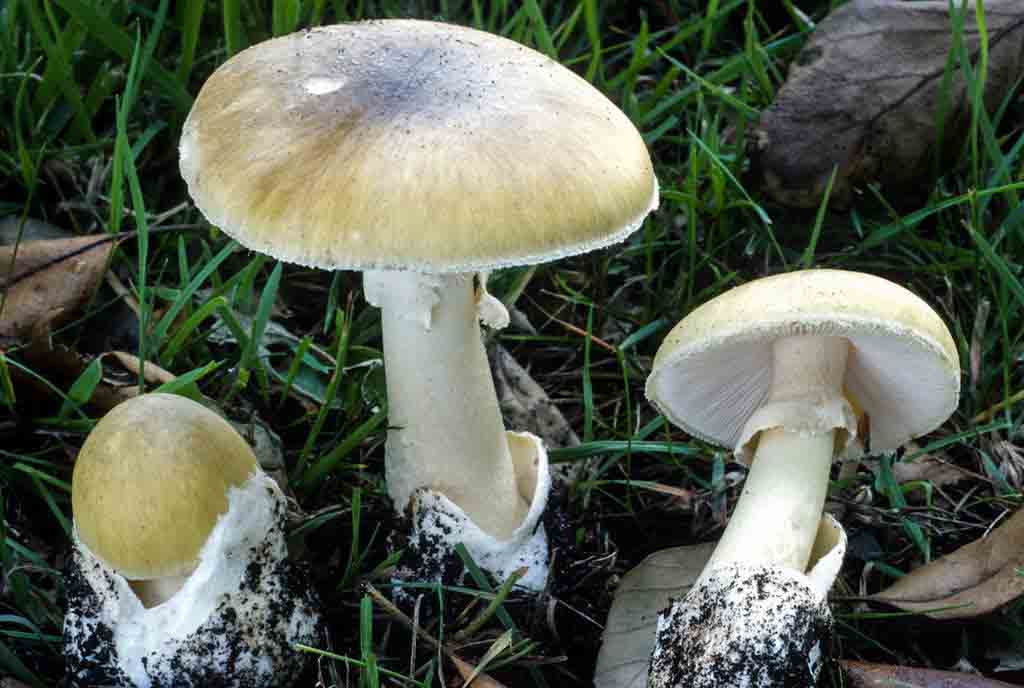
Among poisonous mushrooms, the first place in toxicity and frequency of fatal poisoning is rightfully occupied by toadstool. Its poison is resistant to heat treatment, and also has delayed symptoms of poisoning. After tasting these mushrooms, you can feel like a completely healthy person for the first day, but this effect is completely deceptive. While precious time is running out to save a life, toxins are already doing their dirty work, destroying the liver and kidneys. From the second day, symptoms of mushroom poisoning manifest themselves as headache and muscle pain, vomiting, but time has already been lost. In most cases, death occurs.
Even by simply touching the edible mushrooms in the basket for a moment, the venom of the toadstool is instantly absorbed into their caps and legs of the edible mushrooms and turns the harmless gifts of nature into a deadly weapon.
Pale toadstool grows in deciduous forests and in appearance (at a young age) is a bit like champignons or greenfinches, depending on the color of the cap. The cap can be flat with a slight convexity or egg-shaped, with smooth edges and ingrown fibers. The color varies from white to greenish-olive, the plates under the cap are also white. The elongated leg at the base expands and is “shackled” in the remains of a film-bag, which hid a young mushroom underneath, and has a white ring on top.
In the pale grebe, when broken, the white flesh does not darken and retains its color.
Fighter, or Aconite
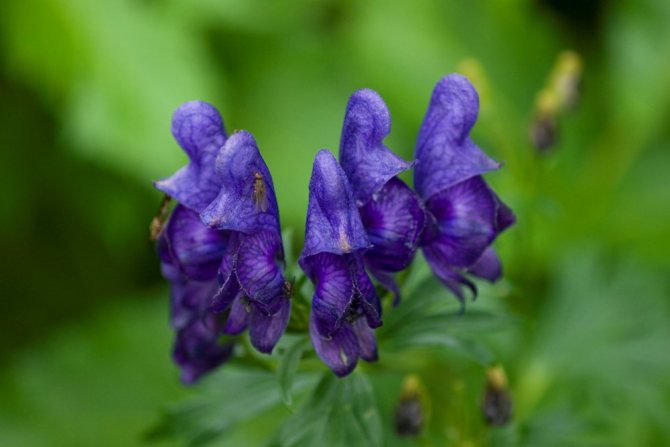
More than 60 species of this poisonous plant grow in central Russia. It is used in folk medicine, but careless handling of any parts of aconite can lead to health problems. The main symptoms of poisoning are burning pain and numbness in the mouth, convulsions, and difficulty breathing. Aconite grows up to one and a half meters in height, has dark green leaves with dissection. At the ends of the stems there are bright blue or purple flowers that resemble a helmet with a lowered visor, which is why the plant is also called skullcap. In former times, the poison of the flower was used to lubricate arrows when hunting wolves.
Datura
Another dangerous member of the Solanaceae family is Datura vulgare (stinky), an annual plant up to 1.5 meters high with dark green, jagged, ovate leaves and large white flowers with a strong odor. In addition, Datura also has fruits in the form of a capsule covered with thorns and containing black seeds. Symptoms of poisoning are similar to henbane. These poisonous plants of the Krasnodar region are also very common; they have long “settled” next to people, even within the city.
Fraxinella
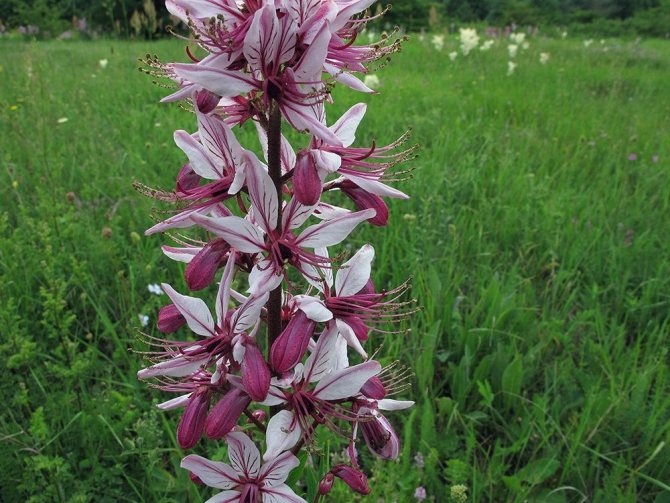
This unusual and beautiful plant has large flowers in white, pink and lilac shades with purple veins. After flowering, the fruits ripen, located in capsules, which emit a strong aroma reminiscent of orange zest. This plant is popularly nicknamed the burning bush because of its unusual property: during ripening, a cloud of essential oils forms around the ash tree. It can be set on fire with a match in calm weather, and the bright purple flame will not affect the plant itself. You should not touch the plant, as all its parts are poisonous. Careless handling of ash can cause severe burns that develop into non-healing ulcers, the mark of which will not go away throughout your life. The plant should not be eaten due to the high probability of death.
Beautiful, but “horseradish mushroom” Hebeloma adhesive
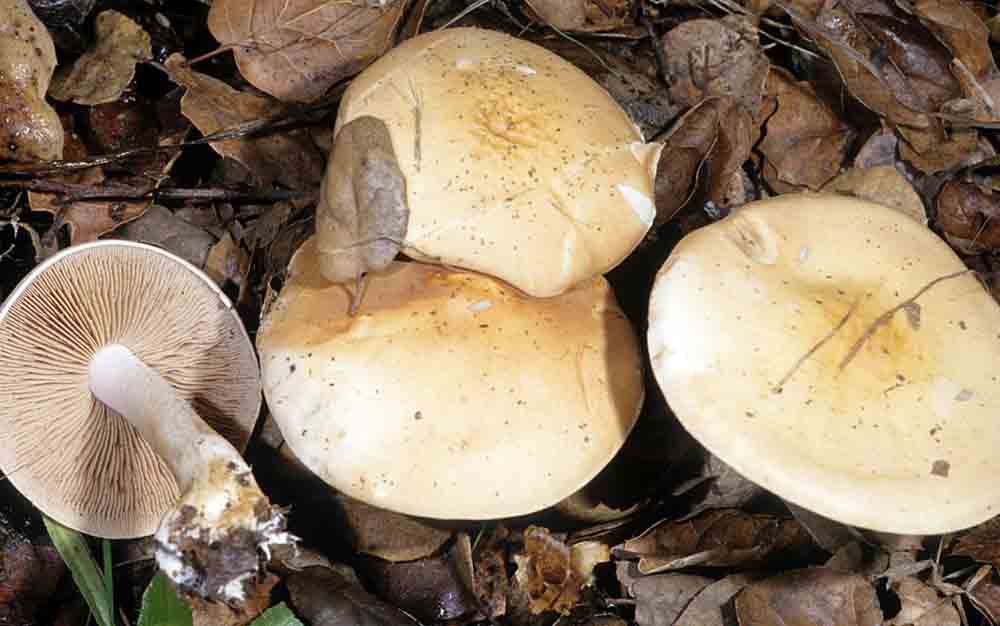
This is exactly the case when the name matches the content. The mushroom false valui or horseradish mushroom was not easily dubbed by people with such an indecent word - not only is it poisonous, but the flesh is bitter, and the smell it emits is simply disgusting and not at all mushroom-like. But thanks to its “aroma” itself, it will no longer be possible to gain the trust of a mushroom picker under the guise of russula, which valui is very similar to.
The scientific name of the mushroom is “hebeloma adhesive.”
False tree grows everywhere, but often it can only be seen at the end of summer on the light edges of coniferous and deciduous forests, under oak, birch or aspen. The cap of the young mushroom is creamy-white, convex, with the edges turned down. With age, its center bends inward and darkens to a yellow-brown color, while the edges remain light. The skin on the cap is nice and smooth, but sticky. The bottom of the cap consists of adherent plates that are gray-white in young valuei and dirty yellow in old specimens. The dense, bitter pulp also has a corresponding color. The leg of the false valuu is quite high, approximately 9 cm. It is wide at the base, then tapers upward, covered with a white coating similar to flour.
A characteristic feature of the “horseradish mushroom” is the presence of black inclusions on the plates.
Hogweed
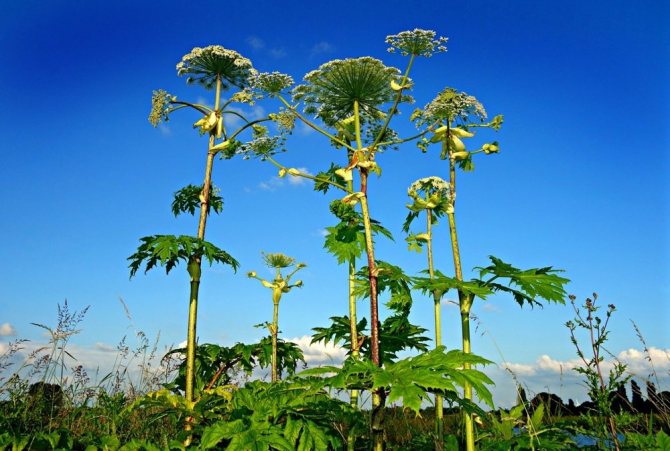
This plant was bred for feeding farm animals, but turned out to be unsuitable due to the deterioration of the quality of milk and its bitterness. Over time, Hogweed spread throughout Russia and now grows everywhere. You can recognize it by its huge leaves and thick hollow stems, which are crowned with white inflorescences that resemble an umbrella. Hogweed can grow to incredible sizes, exceeding three meters. Its juice is poisonous, so you should not touch the plant. The substance, when it comes into contact with the skin, causes severe burns, which are aggravated by exposure to ultraviolet radiation. Getting the juice into the eyes causes incurable blindness.
Crow's eye
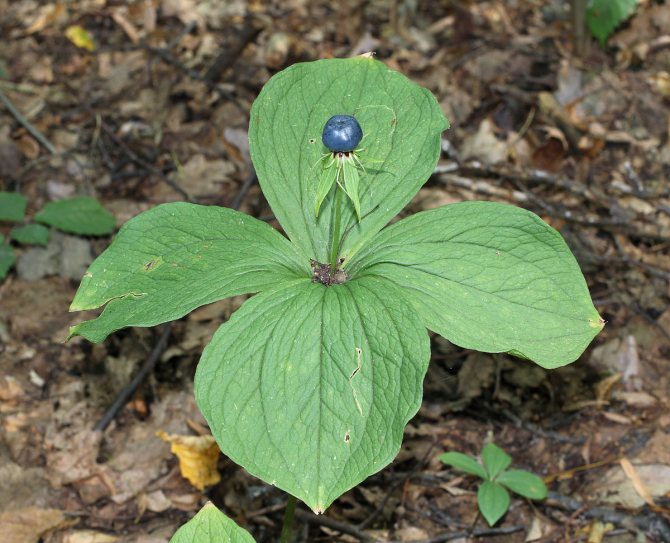
This plant prefers shaded and moist places, but is widespread everywhere. Crow's eye reaches 40 centimeters in height, the leaves are located only in the upper part of the stem in a rosette, between which a single berry, reminiscent of blueberries, ripens. All parts of the raven's eye are poisonous. The leaves have a negative effect on the central nervous system, the berries affect the heart, and the roots and stems cause vomiting. When consumed, cramps, nausea, abdominal cramps, and cardiac dysfunction may occur. It is better to avoid this dangerous plant to avoid health problems.
